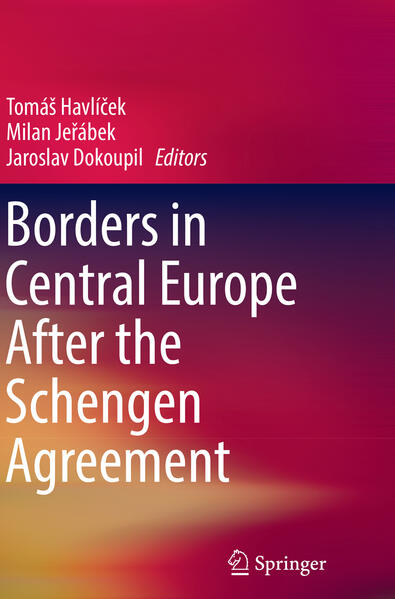
Zustellung: Fr, 06.06. - Mi, 11.06.
Versand in 6 Tagen
VersandkostenfreiBestellen & in Filiale abholen:
This book is the result of research into the considerable impacts the signing of the Schengen Agreement has had on the border regions of the signatory, in particular the Central European internal borders. The analysis provides an in-depth look at European integration, development and perception at the state level as well as in the selected border regions of Central Europe. The book discusses results from population questionnaires in this region, and presents the most important features of development of border regions within Central European internal borders/borderlands after the Schengen Agreement. This book is suitable for students and researchers dealing with the borderlands, but also outlines sufficient information to be of interest to regional planners and policy makers.
Inhaltsverzeichnis
Introduction (Milan Je ábek). - Part I: European Integration, Borderlands and Schengen. - Chapter 1. Changing European Union: the Schengen Agreement (Petr Dostal). - Chapter 2. The Development of Borderlands as a Part of European Process of Integration (Jaroslav Dokoupil). - Chapter 3. Phenomenon of Schengen Fact or Fiction? (Tomáš Havlí ek). - Chapter 4. Euroregions as a Platform for Cross-Border Cooperation (Milan Je ábek). - Chapter 5. Institutionalisation of Cross-Border Cooperation: the Role of the Association of European Border regions (Martín Guillermo Ramirez). - Part II: Case Studies - Internal and External Schengen Borders. - Chapter 6. The Example of Swiss Borderland with a Focus on Euregio Basiliensis/Tri Rhena (DE/FR/CH) (Walter Leimgruber). - Chapter 7. Development of the Slovak Borderlands with an Emphasis on the Situation after Schengen: internal and external borders (Marian Halás). - Chapter 8. Eastern Borderland of the Baltic States as the External
Border of Schengen (Josef Miškovsk). - Chapter 9. Silesian Identity across the Internal Borders of the EU (Tadeusz Siwek). - Part III: Research in the Model Euroregions on the Czech Borderlands. - Chapter 10. The Quality of Life and Cross-Border Relation in Selected Czech Euroregions (Alena Matušková). - Chapter 11. The Building of Cross-Border Region Using the Example Euroregion Silva Nortica - on the Way from Closed to Open Borders (Tomáš Havlí ek). - Chapter 12. Cross-Border Community Expression of Open Civil Society on the Example of the Euroregion Elbe/Labe (František Zich ). - Chapter 13. Conclusions: The borderlands after Schengen self-sufficient, oscillatory and/or transit regions? (Milan Je ábek).Produktdetails
Erscheinungsdatum
12. Juni 2018
Sprache
englisch
Auflage
Softcover reprint of the original 1st edition 2018
Seitenanzahl
252
Herausgegeben von
Tomás Havlícek, Milan Jerábek, Jaroslav Dokoupil, Tomáš Havlíek, Milan Jeábek
Verlag/Hersteller
Produktart
kartoniert
Abbildungen
X, 239 p. 40 illus., 6 illus. in color.
Gewicht
441 g
Größe (L/B/H)
235/155/13 mm
ISBN
9783319874548
Entdecken Sie mehr
Bewertungen
0 Bewertungen
Es wurden noch keine Bewertungen abgegeben. Schreiben Sie die erste Bewertung zu "Borders in Central Europe After the Schengen Agreement" und helfen Sie damit anderen bei der Kaufentscheidung.









